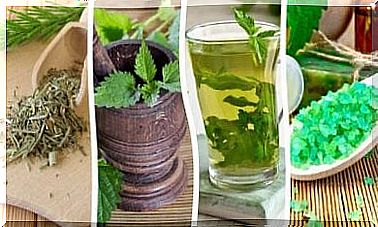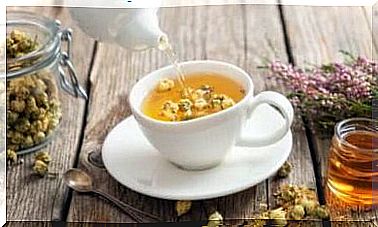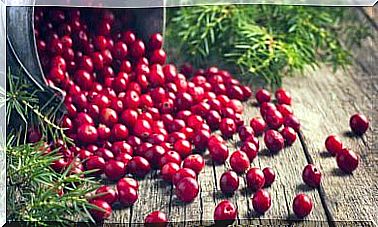The Color Of Food And Its Nutritional Value

The color of food seldom determines what we put on our plate. However, there are many healthy nutrients hidden in red, green and yellow foods.
One of the recommendations of the Department of Health in Canada is: “Eat at least one dark green and orange vegetable a day.” But why is this statement so detailed? Is the color of food really related to its quality and nutritional value?
Overall, it should be said that not all foods of the same color have the same properties. From a nutritional point of view, it is difficult to compare cow’s milk with onions, tuna with tomatoes, or nuts with whole grain pasta.
However, it cannot be denied that there is a message behind the colors of vegetables and fruits. It turns out that their color informs us about their properties.
Phytochemicals – vegetable pigments that affect the color of food
All food products contain macronutrients (carbohydrates, fats and proteins) and micronutrients. You may know them under the name of vitamins and minerals. However, vegetables and fruits also contain other ingredients: phytochemicals.
Phytochemicals are present in plants for their own purposes. However, it turns out that they also affect our bodies. Most of them are very strong antioxidants that protect us against the development of diseases such as cancer, degenerative diseases and cardiovascular diseases.
Much research is currently being done on this topic. We hope that their results will help us understand in the future how the color of food affects our health.
What does the color of the food tell us about?
In general, we can divide phytochemicals into three major color groups : carotenoids, chlorophyll and anthocyanins.
Carotenoids – not just skin
Carotenoids are pigments that are of great importance to our bodies, but we are not able to produce them ourselves. That is why we must ingest them with food. They are present in orange, yellow and red fruits and vegetables.
Research results suggest that consuming carotenoids reduces the risk of developing cardiovascular disease. They are also extremely powerful antioxidants that protect the skin and keep your eyes healthy.
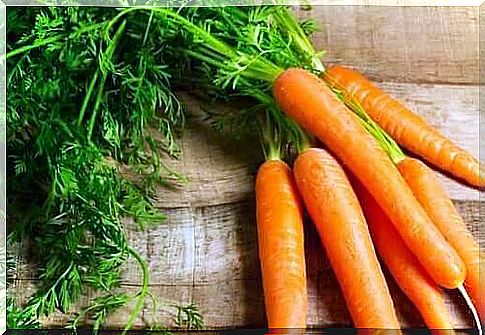
However, you need to be aware that only carotenoids contained in unprocessed whole foods are beneficial. To date, researchers have not observed that consuming commercial supplements has the same effect.
Among the fruits and vegetables with the highest amount of carotenoids, we can distinguish:
- Reds: tomatoes, cherries, raspberries, watermelons, and red peppers.
- Orange: carrots, papayas, apricots, peaches, nectarines, pumpkins and sweet potatoes.
- Yellow: cantaloupe, mango and corn melons.
Chlorophyll
Foods rich in chlorophyll can be recognized at a glance because of their green color. They help us to oxygenate our bodies, support the removal of heavy metals and support the development of a healthy intestinal bacterial flora.
Additionally, some studies suggest that:
Chlorophyll is found in many green leafy vegetables, such as chard, spinach, broccoli, asparagus, cabbage, and artichoke, as well as kiwi. These vegetables also usually contain large amounts of vitamin K, folate, and magnesium.
Besides, most of them have a hidden secret: they contain extremely high amounts of carotenoids. This can easily be overlooked as the yellow pigment is hidden behind the chlorophyll green.
Purple anthocyanins
The last group of phytochemicals are anthocyanins. They can be easily identified by the purple or blue color they give to fruits and vegetables. Their best sources are blueberries, blueberries, blackberries, grapes and red cabbage. Besides, there are also quite a lot of them in some red fruits, such as strawberries.
The antioxidant effect of anthocyanins reduces the risk of myocardial infarction in young and middle-aged women. Epidemiological studies link regular anthocyanin consumption to:
- Reducing the risk of cardiovascular diseases ,
- Reducing the likelihood of developing type 2 diabetes,
- Acts protecting the nervous system,
- Supporting the maintenance of proper weight,
- Reduction in mortality.
Food color – what about white vegetables?
When discussing the different colors of vegetables and fruits, it is impossible to ignore the importance of white. These vegetables are often ignored because they are not that colorful. However, they also often contain many healthy nutrients that are worth keeping an eye out for.
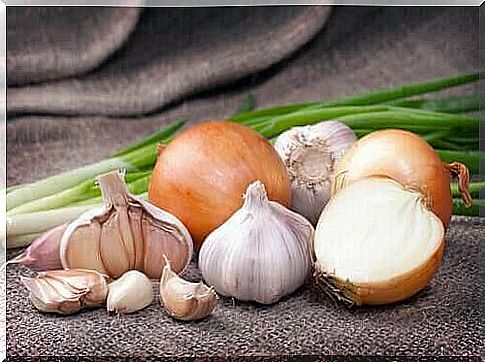
Indoles are found in vegetables such as leek, radish, onions, and garlic. Onion and garlic are also an excellent source of quercetin and allicin, substances that have a positive effect on the cardiovascular system.
Food color and diet
If you want to follow a proper diet, you can’t just rely on the color of your food. You also need to pay attention to the nutritional value of each fruit, vegetable, and grain, which is also influenced by other factors. There are many more phytochemicals in vegetables that cannot be recognized by their color.
Besides, it cannot be assumed that orange fruit is better than purple fruit. After all, red food products should be eaten not only to take care of your circulatory system.
Interestingly, from a chromatic point of view, we can create an infinite number of combinations of different products every day. This is a very good approach because the more varied your diet, the less likely you are to run out of a key nutrient.
Therefore, to take advantage of all the health benefits of phytochemicals, you need to make sure you are consuming the right amount of them. Of course, remember that there are many more than just the ones we’ve listed in today’s article.







